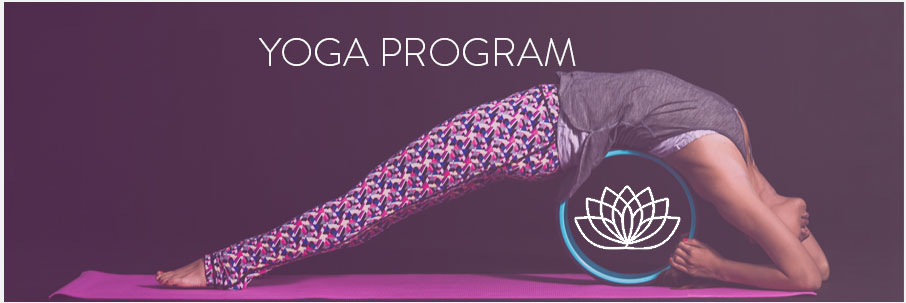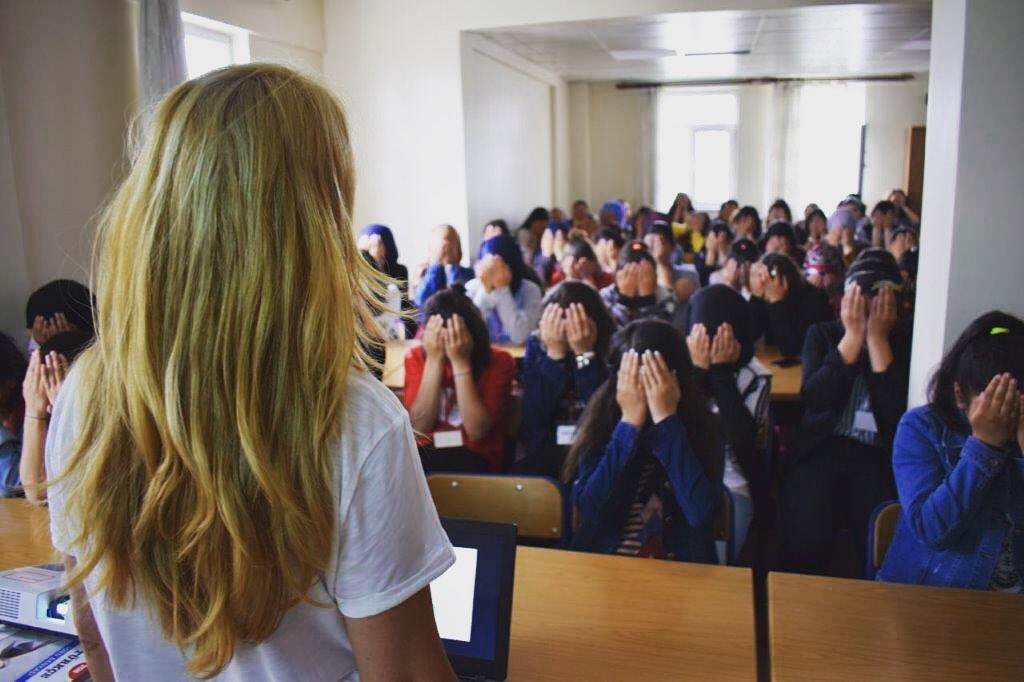Eye Yoga
Do you feel your eyes tired after your work day? Do you want to take care of the health of your eyes? Then eye yoga is for you! But what exactly is it all about? What are the benefits? How to practice? I explain everything you need to know about it in this article!
Eye yoga: what is it?
It may seem strange to take care of the health of your eyes. It is not something we are used to doing. And yet, waiting until you have an eye disease to take care of it is already too late! It is better to take care of your eyes beforehand.
Indeed, the eyes are muscles like any other. They need to be strengthened throughout our lives. Eye yoga is therefore a set of very gentle exercises that helps work the eyeballs.
In our daily life, our eyes are often solicited and tired. As you certainly know, screens are their worst enemy, but their use is more and more frequent in our society. On a computer or a telephone, we exercise our near vision and stay focused on the central vision. This is very harmful to our eyes as the days go by.
Similarly, our urbanization tends to tire our eyes. Indeed, buildings force us to see up close all the time. It is increasingly rare to be surrounded by large spaces where we can look at dozens of meters without obstacles. However, to look at something closely is an effort for our eyes. This leads to tension and eye fatigue. Indeed, an eye at rest is an eye that sees far away. On the other hand, it needs to work (accommodate) to look closely.
Eye yoga will therefore help you to counter the harmful effects of your daily life on your eyes.
Why do Eye Yoga?
In recent years, the multiplication of screens in our daily lives has caused a lot of harm to our vision. Indeed, they accustom our eyes to look closely, and by force, make us lose our ability to look from afar. Thus, in 40 years, people suffering from myopia (distance vision disorder) have become twice as numerous in France. Our eyesight is one of our senses that is most solicited and the resulting eye fatigue creates pathologies over time.
Doing eye yoga will therefore allow you to release tensions or to strengthen your eyes, in order to limit the arrival of sight disorders. If you already suffer from eye pathologies, eye yoga can also be beneficial to avoid aggravating your problems.

History of Eye Yoga: What is the Bates Method?
William Bates was an innovative American ophthalmologist of the 1920s. During his career, he saw an improvement in his patients' vision by having them perform eye exercises on a regular basis. In addition, he was against the use of glasses, which forced the eye to constantly adapt. He therefore favoured this type of exercise, which allowed him to respect the physiology of the eye and to strengthen it.
Indeed, the yoga movements of the eyes allow to relax the muscles and to irrigate the eyeballs in order to improve the capacity of your eyes.
A multitude of his patients have mentioned the benefits of this type of exercise on their disorders: they would have greatly diminished, especially in the case of presbyopia. Nevertheless, no scientific study has demonstrated the success of the so-called Bates Method.
However, for several decades, it seems that thousands of people have applied Dr. Bates' advice. Many have reported the disappearance of their eye diseases or at least a noticeable improvement in their vision.
Although it cannot be said that the Bates Method will solve all your problems. However, it seems to be an excellent way to relieve your eyes on a daily basis.
Eye Yoga : From Bates to Trataka Meditation
Over time, Dr. Bates' work has led many professionals to take an interest in this subject.
In 1935, Dr. Agarwal, an Ayurvedic physician, brought together the ancestral knowledge of vision from "Hatha Yoga Pradipika" with that of the Bates Method. He then succeeded in deriving a technique called since Yoga of the Eyes. The aim was primarily to relieve eye tension, although he believed it could bring benefits to vision.
Among the information related to Eye Yoga found in the History of Yoga is the Trataka meditation. This exercise is described in Chapter II of Hatha Yoga Pradipika, a founding work of Hatha Yoga. It reads :
« Trataka eliminates all eye diseases, fatigue and laziness and closes the door at the origin of these discomforts. ».
The principle of this meditation is to put one's gaze and mind at rest by focusing on an object in the distance. Many people use the flame of a candle for this purpose. They place a lighted candle 50 cm from the face, at the same level as their eyes and stare at this point for 10 minutes.
The benefits would be numerous on the ocular tiredness. In addition, Trataka meditation leads to a relaxation of the mind, which is beneficial to meditation.

What are the benefits of Eye Yoga?
If you choose to practice the eye yoga exercises for a few minutes, you will quickly notice a deep relief. Here are a few of the benefits you can derive from this practice:
- Eye yoga strengthens the muscles of the eyes and allows their vascularization.
- It alleviates eye fatigue, which can be responsible for long-term eye pathologies.
- It helps to limit ophthalmic migraines and relieves headaches.
- Associated with breathing, it allows you to relax and have a boost of energy during your working day.
Eye Yoga Exercises
To test eye yoga you can practice some of the following exercises. They are simple and open to all. Nevertheless, I invite you to contact your doctor or your ophthalmologist before practicing them, if you think they might pose a risk.
• Circular eye movements: with your eyes closed, place your gaze to the right, up, left and then down, several times in a row. Then reverse the direction of the circle.
• Working on distance vision: Put your thumb with your arm stretched out in front of you and look into the distance through your thumb, then turn your attention back to your thumb and bend your elbow to bring it closer to your face, until it rests on your nose. Then repeat the exercise several times.
• Office rest: Every 20 minutes, take your eyes off your screen. Close them for 20 seconds to release tension, while thinking about the color black. This advice, given by Dr. Bates, will help you relax even more.
• Palming: Rub your two hands together for a few seconds to create warmth. Then form two shells with each palm of your hands and place them over your eyes, making the color black. Stay in this way for a few seconds.
• Peripheral vision: look as far to the right as possible without moving your head, then to the left. This, while keeping your eyes open. Repeat 5 or 10 times, then do the same exercise looking up and then down.
These exercises can sometimes cause slight dizziness or pain. If this happens, stop the eye yoga practice for a few moments and listen to yourself.
Contra-indications of eye yoga :
Before practicing Eye Yoga, you can discuss it with your ophthalmologist to make sure that there are no contraindications based on your vision and current disorders. In addition, people suffering from epilepsy, inner ear problems or any other serious pathology should consult a doctor before practicing.
However, Eye Yoga is a relatively gentle practice that is normally accessible to a large number of people.
Despite Dr. Bates' theory and the positive testimonies on the subject, it is not proven that Eye Yoga can relieve eye pathologies. It is therefore preferable to be critical and not to apply these exercises for the sole purpose of healing eye disorders.

Some additional tips to preserve your eyes
In addition to eye yoga exercises, here are a few habits to take to keep your eyes healthy:
If you work on a screen, take regular breaks. Take 5 minutes every hour to look as far away as you can, breathe and why not close your eyes. Drink enough: Hydration is important for the health of your eyes, always keep a bottle of water with you. Humidify the air: Dry eyes are reinforced by a dry environment (air conditioning in particular). Don't hesitate to place a bowl of water or a humidifier in your office. Adapt good ergonomics: your position is important to limit pain and eye fatigue after a day's work. Adjust your position regularly and don't hesitate to review the location of your screen and your seat. Finally, get into the habit of not looking too closely at your screen. Opt for screen glasses: for around 30 euros, you can reduce your eye fatigue with a pair of blue filter glasses. Indeed, screens have an intense blue light that leads to headaches and fatigue at the end of your day. When you get home from work, forget about screens: turn off smartphones, reading lights or television in the evenings.

Now you know everything you need to know about Eye Yoga! Don't hesitate to try these exercises and tips on a daily basis to limit the fatigue of your eyes.


